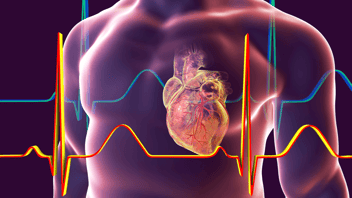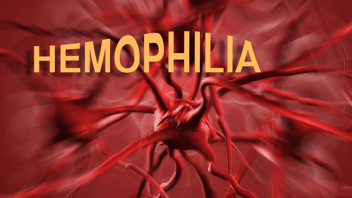What You Need to Know About Hypovolemic Shock for the NCLEX

Learning about Hypovolemic Shock
Nursing students must understand hypovolemic shock due to its life-threatening nature and frequent occurrence in various clinical settings. Recognizing the early signs, managing fluid resuscitation, and addressing the underlying cause are critical for swift intervention, optimizing the patient outcomes, and providing competent emergency care.
.png?width=1200&height=630&name=nclex%20review%20for%20angina%20(2).png)
Hypovolemic shock emerges as a dire medical emergency, marked by a profound drop in blood volume due to severe fluid or blood loss. This condition can result from various causes, including trauma, internal bleeding, or excessive fluid loss from conditions like dehydration or burns.
As blood volume diminishes, the heart struggles to maintain adequate circulation, leading to compromised oxygen delivery to vital organs. Individuals in hypovolemic shock may exhibit symptoms such as rapid heart rate, low blood pressure, confusion, and cold, clammy skin. Swift medical intervention is crucial to restore blood volume and stabilize the patient.
Treatment involves intravenous fluids, blood transfusions, and addressing the underlying cause. Timely recognition and immediate medical attention are pivotal in successfully managing hypovolemic shock and preventing severe organ damage.
General Information on Hypovolemic Shock
1. Hypovolemic Shock – loss of blood volume leading to decreased oxygenation of vital organs
2. The body’s compensatory mechanisms fail and organs begin to shut down.
Nursing Assessment for Hypovolemic Shock
1. Symptomsa. Worsening hypotension→ low volume
b. Tachycardia→ Body is working hard to pump the volume that is there
c. Weakness
d. Tachypnea
e. Decreased LOC
f. Inadequate urinary output→ low volume=low output
g. Weak pulse
h. The body tries to compensate and if ti can’t organ failure occurs
2. Identify Cause
a. Some causes are vomiting/diarrhea x days, severe burns, traumatic injury, hemorrhage (surgical, obstetric)
.png?width=1200&height=630&name=nclex%20review%20for%20angina%20(2).png)
Therapeutic Management for Hypovolemic Shock
1. Treat Causea. OR for repair
b. Meds for vomiting/diarrhea
2. Replace Volume
a. Crystalloid – LR, NS
b. Colloid – Blood Products
c. Rapid Infuser
3. Support Perfusion
a. Hemodynamic Monitoring
b. Vasopressors
4. Life Support
a. Decreased LOC = may need airway protection & ventilation
Nursing Case Study for Hypovolemic Shock
Patient Profile:Name: Ed Smith
Age: 55 years old
Gender: Male
Medical History: Hypertension, peptic ulcer disease
Presenting Symptoms:
- Profuse sweating and cool, clammy skin
- Rapid, thready pulse
- Hypotension
- Confusion and altered mental status
- Physical Examination: Mr. Smith appeared pale, with a heart rate of 140 beats per minute and blood pressure of 80/50 mmHg.
- Hemoglobin and Hematocrit: Significantly decreased, indicating acute blood loss.
- Arterial Blood gas (ABG): Showed metabolic acidosis due to inadequate tissue perfusion
Medical History:
Mr. Smith experienced sudden, severe gastrointestinal bleeding from a peptic ulcer, leading to hypovolemic shock.
Diagnosis:
Mr. Smith was diagnosed with hypovolemic shock, a life-threatening condition characterized by inadequate circulating blood volume.
Treatment Plan:
- Hemodynamic Stabilization:
- Intravenous Fluid Resuscitation: Large bore IV access established for rapid fluid replacement with crystalloids
- Blood Transfusion: Packed red blood cells transfused to restore oxygen-carrying capacity
- Oxygen Therapy:
- Oxygen administered to improve tissue oxygenation
- Monitoring and Support:
- Continuous Cardiac monitoring: Vital signs closely monitored to assess response to treatment.
- Urinary Catheter: Inserted to monitor urine output as a measure of renal perfusion
- Medication Management:
- Proton Pump Inhibitor: Administered to reduce gastric acid production and minimize the risk of further bleeding.
- Patient Education:
- Educated Mr. Smith about the importance of regular follow-up appointments and lifestyle modifications to prevent recurrent bleeding.
Outcome:
With prompt interventions and supportive care, Mr. Smith’s hemodynamic status stabilized. His blood pressure improved, demonstrating a positive response to fluid resuscitation and blood transfusion. Gradually, his mental status improved, and his vital signs normalized. He was monitored closely to prevent any potential complications.
Conclusion and Free Download
This hypovolemic shock review provides essential knowledge for approaching the NCLEX with confidence. Understanding its prevention, management, and interventions empowers nurses to provide effective care and save lives.
Are you looking for more must-know NCLEX review topics? Download our free eBook "NCLEX Flash Notes" as a valuable resource for nursing students. Encourage readers to download their free copy of the "NCLEX Flash Notes."
.png?width=1200&height=630&name=nclex%20review%20for%20angina%20(2).png)
You CAN Do This
Happy Nursing!







